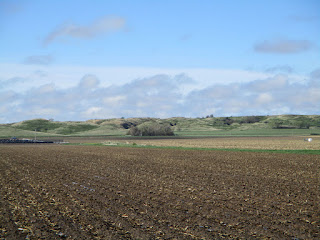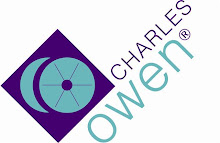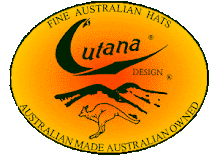Tuesday May 10th I had been increasingly concerned about the fit of Mo's pack saddle, as it put too much pressure forward onto his shoulders where there were already inherited bald pressure patches. My pack saddle is adjustable, and thinking about it overnight I deduced that if I narrowed it at the front, it might level the balance of the saddle on his back. The problem was that I did not have a spanner. Leaving early and not wanting to disturb Luke, I waited until I had ridden for a couple of hours before going to the next house where the children were off to school. Jennifer Ekhart listened sympathetically to my request and fetched her husband who produced said item. After a bit of tinkering the balance was much improved, and I also re-stuffed the pockets in his Mattes saddle pad to ensure the pressure was right off his shoulders. In the meantime Jennifer brought me out a cup of coffee and biscuits. And donated the spanner!
About ten miles further on along a side road we came to the site of Mud Springs Pony Express Station in a lovely location by a small lily covered pond where the horses were able to quench their thirst...
The Pony Express marker is in the grove of trees behind, which you can see as the camera pans round.
Mud Springs was the first home station travelling west from Julesburg and also served as a stage stop. In 1865 it was the scene of an inconclusive battle between the US army and a large band of Sioux, Cheyenne and Arapahoe Indians.
According to Burton, accommodation was primitive and flea ridden, consisting of 'an open shed, with a sort of dormitory by the side' and he ended up sleeping under a wagon.
After losing a tussle with my second cattle gate (more of which later) I had to retrace my steps back to the main 385 highway, but found a corral, feed and hay for the horses with local horse owners Tammy and Teresa....
Wednesday May 10th
The next Pony Express station after Mud Springs was Courthouse Rock, a major guiding landmark for pioneers and clearly visible across the floodplain of the North Platte as we descended the bluff to Mud Springs the day before.Courthouse Rock is the massive pyramidal sandstone outcrop behind the trees on the left in the photo below. It was originally likened to a castle or court-house, but according to Burton was already degraded from its original shape by the time he saw it.
To the right is the smaller feature known as Jail or Jailhouse Rock. Rather than dancing to it, we walked very soberly into the field below. I had been given permission to graze the horses there at midday by Todd and Bobby of local farming family the Faesslers. Pumpkinseed Creek Pony Express station was probably somewhere round here, as it was reported to be about six miles south of Bridgeport and we had just crossed Pumpkin Creek. The small log cabin which apparently served as a Pony Express station there is now at Harold Warp's Pioneer Village in Minden, Nebraska...
From here the Pony Express Trail cut across country towards Chimney Rock through private land, and we detoured north through Bridgeport, where I found an excellent place to camp in a grassy paddock belonging to delightful elderly couple Bernard and Betty Stanley..
I was thrilled when Bernard pointed out that we could just see Chimney Rock in the distance from their house. And Betty insisted that I come in for a delicious pea and ham soup supper and breakfast the next morning!






































































